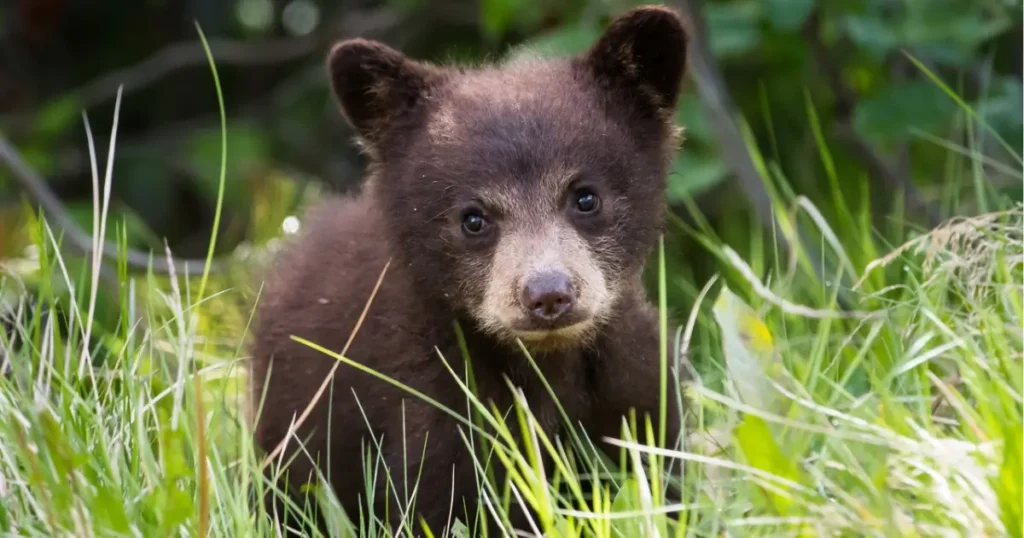
Photo by Jillian Cooper / Getty Images
The BC Conservation Officer Service (BC COS) has inconsistent data related to the number of black bears they’ve killed annually for several years – and The Fur-Bearers is looking for answers.
As part of our mandate, The Fur-Bearers monitors the wildlife-related activities of the BC Conservation Officer Service – a law enforcement agency that is also responsible for responding to human-wildlife conflict when it involves large wildlife like coyotes, cougars, and grizzly and black bears. Historically, this has involved annually tracking and analyzing of statistics related to the number of animals killed by officers of the agency, in addition to the number of calls received/attended and the number of alternative measures implemented (such as hazing or translocation).
The Deadliest Communities for BC Black Bears list was developed in 2020 to provide context for many of these killings – they aren’t occurring in a vacuum, but in communities where people’s actions can contribute to the ultimate deaths of bears. Through the freedom of information (FOI) process, the BC COS have provided us with the number of black bears killed, organized by community, from 2015 to 2022. But in 2023, we encountered problems.
The Limited List
In response to request for the 2023 dataset of black bear killings by community, the BC COS only provided a list of ten cities – instead of the full list of communities. The BC COS stated that statistics for the remaining cities were not available. Not only did this lead to a gap in our dataset, we also discovered a discrepancy between the statistics the agency publishes on its predator statistics webpage and the statistics it has provided in response to our past FOI requests.
Black Bears Killed By BC COS


There is a clear discrepancy in how many black bears are killed by the BCCOS between these two sources, varying in magnitude depending on the year. In our discussions with the BCCOS over 2023 data (which was not fully released), we were informed that there may be duplication errors and issues related to moving to a new internal tracking system. However, a change in current systems and processes does not explain the discrepancies in historical data shown in this table, and no margin of error was stated. Our organization depends on accurate, complete data to inform our work in protecting black bears in British Columbia. Unfortunately, these data quality issues raise new questions about the reliability of the BCCOS’s predator statistics and the agency’s ability to accurately compile, track, and report key wildlife statistics to the public.
Impact of Inconsistent Data
This inconsistency calls into question more than the number of black bears killed:
- Can other statistics tracked by this agency be considered credible? What impact does it have for other RAPP-line calls, or the Bear Smart program?
- What led to the inconsistency in data, and what’s being done to address it?
- Would third-party oversight and legislated transparency prevent such issues?
- What impact will this have on decision makers, mapping, researchers, the media, planning, and policy?
Bad data ends in bad policy. The BC COS needs to identify the cause of this data inconsistency, acknowledge its impact, and provide a public response. Until this data inconsistency can be explained and accounted for, a warning of its legitimacy from the government should be displayed when it’s presented.
This data issue echoes and amplifies past messages about public trust with the BC COS made by The Fur-Bearers. It is appropriate for the province’s Auditor General to investigate the BC COS’ tracking, data collection, program evaluations, and more. It wouldn’t be the first time the Auditor General’s office has questioned the efficacy of the BC COS.
Auditor General's Past Comments
In a 2017 report on grizzly bear management, then-Auditor General Carol Bellringer noted that, “we expected the COS to be evaluating the tools and resources it has available (warnings, tickets and formal charges) to ensure they are effective and sufficient, but no such evaluations have taken place.”
Further, the Auditor General added, “The COS relies on WildSafe BC to deliver an education program to prevent conflict with bears but the program is limited and the COS has not evaluated it for its effectiveness.”
The Auditor General must be directed by elected Members of the Legislative Assembly (MLAs) to launch such an investigation. We are encouraging residents concerned by the ongoing transparency and public trust issues of the COS to contact their MLAs to ask them to request the Auditor General begin an investigation into the BC COS and these issues.
Click here to find contact information for your MLA. At this time, we are only asking British Columbia residents to participate, as the process for the Auditor General is prescribed by legislation.
The Fur-Bearers will continue to work on this issue and provide updates as they are available.
